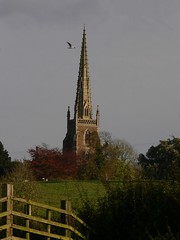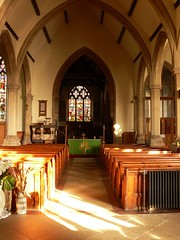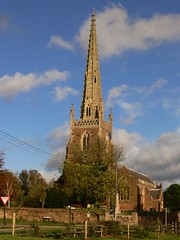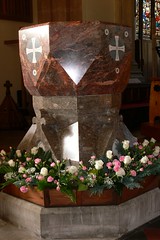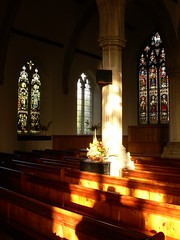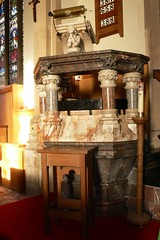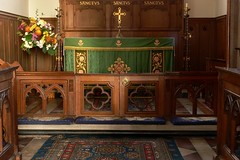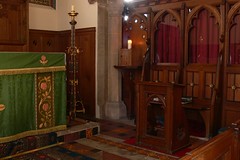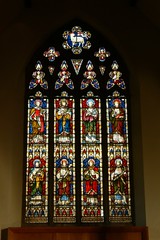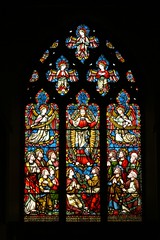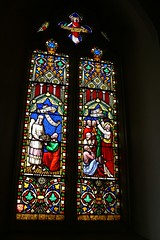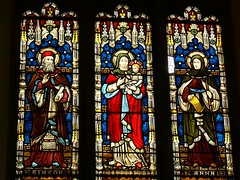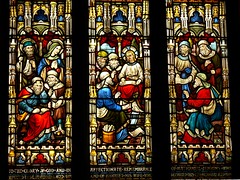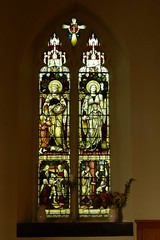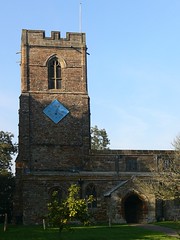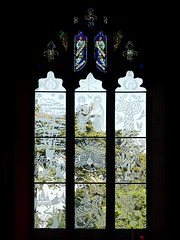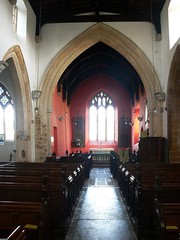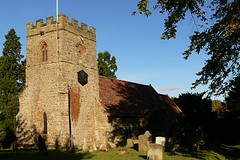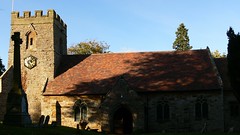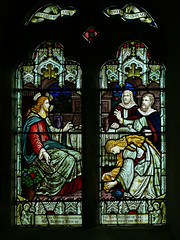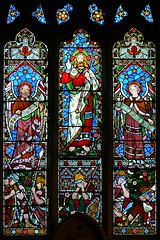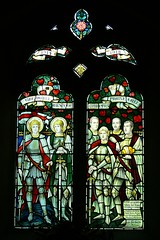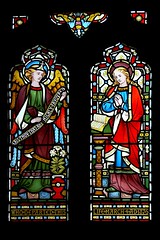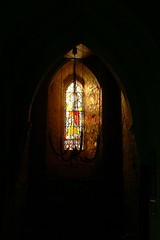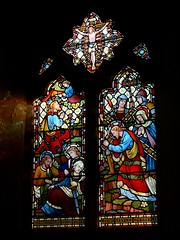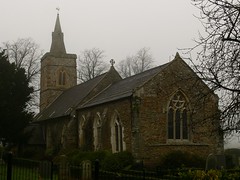
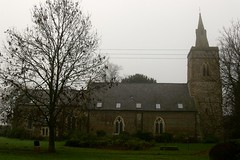
Built in 1340 the parish church of Clay Coton, Northamptonshire became disused in the 1950. In 2000 it was converted into a private dwelling.
Comments Off on Clay Coton – St. Andrew
Dating back to the early 13th century the parish church of St Peter and St Paul is built from the local ironstone which was quarried nearby, and limestone. Much of the church was restored in 1853. Remains of the base of what is thought to be an earlier Anglo-Saxon preaching cross is to be found in the south east of the church yard. The head of the cross is thought to be that seen in the external south wall. In the late 11th century a small priory of Clunic Monks (never more than four), a dependency of the Abbey of Cluny in France, was established in Preston Capes. It was later abandoned due to noise from the nearby castle of Hugh de Leicester, sheriff of Northamptonshire. Being unsuitable for a monastery the monks moved to Daventry.
When the church was restored in 1853 a Victorian stained glass window was installed, the remains of which survive in the top tracery. This was later replaced by plain opaque glass. However this was replaced by an engraved window by Annabel Rathbone and is a memorial to George St John Ravenshear who died in 1972 at the age of ten and whose face appears as that of St George, in the middle bottom pane. The window was provided by Norman St John-Stevas, who used to live in the vicarage next door to the church.
The pews in the nave are Victorian copies of the those in the chancel which are medieval and have traceried panels and poppyhead bench ends.
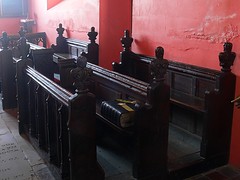
Comments Off on Preston Capes – St. Peter and St. Paul.
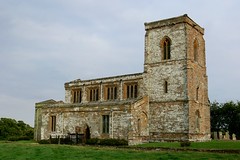
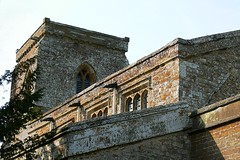
St. Mary’s parish church at Fawsley dates from the early 13th century, much of which remains, including the tower, south porch, chancel, and nave.
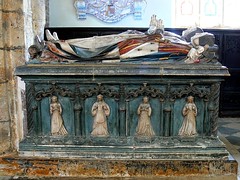
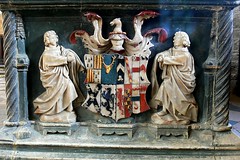
The alabaster free standing tomb to Sir Richard Knightley and his wife Jane Skenard, heiress to Old Aldington is c1540 and contains some fine details.
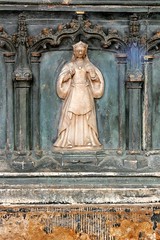
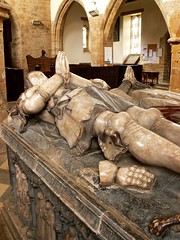
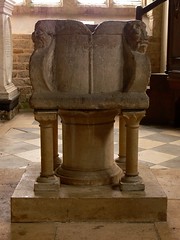
The font is 13th century and the worn original carving has been reworked.
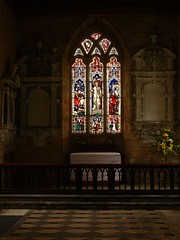
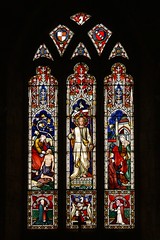
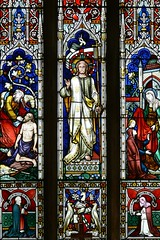
The east window is a Victorian memorial depicting Sir Charles Knightley and his wife in the bottom left and right panels.
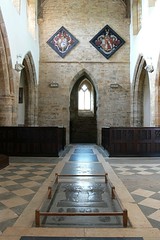

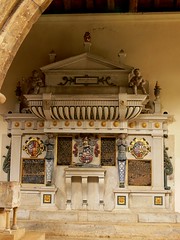
The brass in the aisle, however, is mid 16th century monument to Sir Edmund Knightley and his wife and their six daughters. The oldest brass though is that of Thomas Knightley (1516), which shows him with his heart engraved above his portrait. The largest monument in this church though is the large monument on the north wall to the Knightley family (1566-1619). It was restored in 1930.
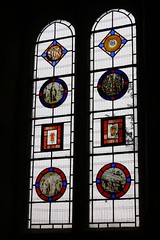
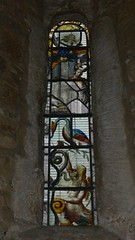
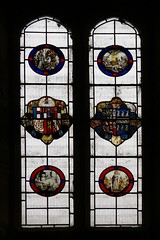
the church also contains a number of peices of medieval stained glass. The oldest is the 13th century window depicting Adam and Eve. Restored in 1992 in memory of the Reverend Roy Dooley. Other windows contain 15th century medallions depicting biblical scenes that were originally at Sulgrave Manor.
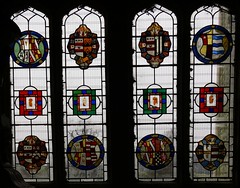
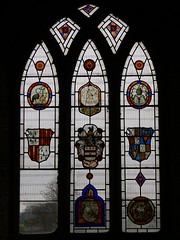
Amongst the glass panels from Sulgrave manor, are 16th century panels depicting marital shields celebrating the marriages of members of the Washington Family. The top panel second from left celebrates the marriage of Lawrence Washington and Amy Pargiter (1538).
The bottom left panel celebrates the marriage of Robert Washington, (son of Lawrence Washington), and Elizabeth Light (1565). The top panel third from left celebrates the marriage of the second son also called Lawrence Washington to Martha Newce. Sulgrave Manor was the home of George Washington’s ancestors, and the central panel clearly shows the Washington coat of arms upon which the American flag, the ‘Stars and Stripes’, is based.
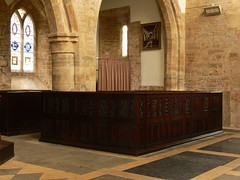
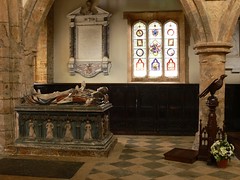
The pews in St. Mary’s are medieval box pews, and in the south aisle is the high sided medieval Knightley Pew. This was designed so that the family members could attend church and not be seen by the rest of the congregation.
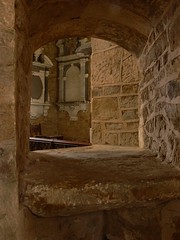
However, with such high sides the family also couldn’t see what the priest was doing at the altar. As a result a ‘squint’ in the south wall of the chancel was made, so that they could see what the priest was doing.
Comments Off on Hellidon – St John the Baptist.


